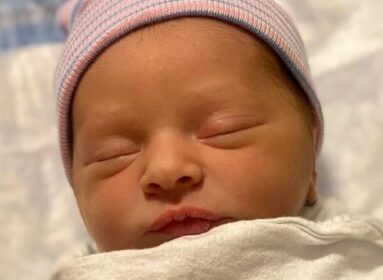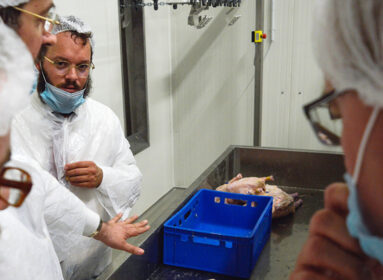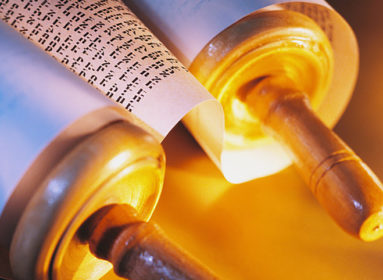
By Rabbi Stephen Lewis Fuchs
The faces in the photo that hangs in the new synagogue in Bad Segeberg haunt me. They seared themselves into my brain the first time I saw it, and they do not let go.
What were these 26 souls thinking when — in hiding — they celebrated Purim in 1936? Their eyes and their smiles betray fear as well as their resolve to celebrate the festival with joy.
There are those who demean Purim and the basis for the festival, the Book of Esther. They say: “It is the only book in the Tanach that does not mention God!” “The story reads a cartoon melodrama. It is obviously a work of fiction” “I am turned off by the excessive violence described as the Jews take their revenge.”
These criticisms notwithstanding, Esther is our prototype story of triumph over forces that have tried to destroy us.
So what if the story is fictionalized and overdrawn? It is an inspiring tale of courage.
First of all, there is the courage of Vashti. What a role model she is for women of today who face sexual harassment! When the king wanted her to show her beauty (in the altogether, commentators claim) to his drunken friends, she had the courage to refuse. She put her dignity and self-respect above position and power.
Then there is the question of destiny. When Mordecai tells Esther to tell the king she is Jewish, she replies, “I can’t. No one sees the king without an invitation, He has not invited me for 30 days.” “This is your moment,” claims Mordecai. “Who knows if you did not become queen just for this opportunity that is uniquely yours to stand up for our people?” What a powerful message.
We all have moments when we are in a unique position to make a positive difference. Esther seized her moment. Will we seize ours?
Certainly the Jews of Bad Segeberg seized their moment in 1936. Their celebration testified to their refusal to allow the Nazis to cow them.
Each time I stare at the photo I wonder: What befell these brave souls? How many, if any, survived Nazi tyranny and celebrated Purim in freedom at some later time?
Regardless, these brave celebrants are the lineal heirs of Vashti and Esther who placed pride and dignity over expediency and ease. Few Jews remained in Bad Segeberg when the Nazi horror ended. The once-proud synagogue in the city crumbled from disuse and was torn down in 1962.
But thanks in large measure to an influx of Jews from the former Soviet Union, and thanks to the skill and determination of the community’s leader, Walter Blender, who saw to every detail of the construction of the new building, a miracle occurred. Thanks are also due to the kindhearted support of the Christian community, led by Pastors Ursula Sieg and Martin Pommerening who extended the hospitality of their church to the new Jewish community as it re-formed.
Every time I climb the stairs to the sanctuary of Bad Segeberg’s Reform (and only) synagogue Mishkan HaTzafon, I look at the 26 brave faces in the photo, and I wish I could thank each and every one.
I have no doubt that because of the courage of the Jews of Bad Segeberg in 1936, there is Jewish life – a thriving and, God willing, growing Jewish life – in Bad Segeberg in 2016.
Rabbi Stephen Lewis Fuchs is the author of What’s in It for Me? Finding Ourselves in Biblical Narratives. He is the former president of the World Union for Progressive Judaism and Rabbi Emeritus of Congregation Beth Israel in West Hartford. In 2014/15, he and his wife, Vickie, spent 10 weeks in Germany speaking in synagogues, churches, universities, the Abraham Geiger College, and high schools. Last year, he served as guest rabbi at Mishkan Ha Tzafon in Bad Segeberg for the High Holidays and is scheduled to do so again this year.
Readers are invited to submit original work on a topic of their choosing to Kolot. Submissions should be sent to judiej@jewishledger.com.








 Southern New England Jewish Ledger
Southern New England Jewish Ledger










